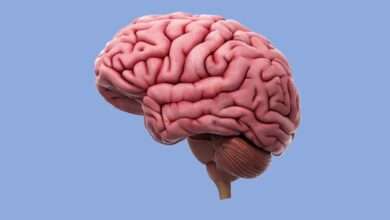
Food allergy is an abnormal defense reaction of the body following the ingestion of food.
To find out all about allergies, see our sheet below.
Food allergy, what is it?
Food-triggered reactions can occur suddenly, within 2 hours of ingestion, or delayed, up to 48 hours later. This sheet only deals with immediate reactions caused by a food allergy. To find out more about gluten intolerance, food poisoning or food sensitivities, consult our sheets dedicated to these subjects.
Food allergy is an abnormal defense reaction of the body following the ingestion of food.
Often the symptoms are mild: tingling on the lips, itching or rashes. But for some people, the allergy can be very serious and even fatal. It is then necessary to banish the food or foods in question. In France, 50 to 80 people die each year as a result of a food allergy.
Food allergies usually appear before the age of 4 years. At this age, the digestive system as well as the immune system are not yet mature, which makes it more susceptible to allergies.
There is no curative treatment. The only solution is to ban the consumption of allergenic foods.
| Note: Although it is rather rare, some people react strongly to the ingestion of various food additives. The reaction can be a real allergy if the additive, even if it does not contain protein, has been contaminated by another food containing it.For example, soy lecithin, which is non-allergenic, can be contaminated with soy protein. But most often, it is a food intolerance whose symptoms resemble those of an allergy.Additives like sulphites, tartrazine and salicylates can cause an anaphylactic reaction or an asthma attack. One in 100 asthmatics is sensitive to sulphites 2 . |
The main allergenic foods
The most allergenic foods are not the same from one country to another. They vary in particular according to the type of food. For example, in Japan, rice allergy predominates, while in Scandinavian countries, it is more fish allergy. The following foods are responsible for about 90% of severe food allergies :
- peanuts (peanuts);
- shelled fruits (almonds, Brazil nuts, cashews, hazelnuts or filberts, macadamia nuts, pecans, pine nuts, pistachios, walnuts);
- cow’s milk;
- eggs ;
- the fish ;
- seafood (especially crab, lobster and shrimp);
- soy le;
- wheat (and related cereal varieties: kamut, spelled, triticale);
- sesame seeds.
Cow’s milk allergy is the one that occurs most frequently in infants, before the introduction of solid foods. This is the case for about 2.5% of newborns .
What is an allergic reaction:
When functioning properly, the immune system detects a virus, for example, and produces antibodies (immunoglobulins or Ig) to fight it. In the case of a person allergic to a food, the immune system reacts inappropriately: it attacks a food, believing that it is an aggressor to be eliminated.
This attack causes damage, and the effects on the body are multiple: itching, redness on the skin, production of mucus, etc. These reactions result from the release of several pro-inflammatory substances: histamine, prostaglandins and leukotrienes.
Note that the immune system does not react against all the components of a food, but only against one or a few substances. It is still a protein; it is impossible to be allergic to sugar or fat.
See our Animated diagram of an allergic reaction.
In theory, allergy symptoms appear at the time of the 2nd contact with the food. At the first contact with the allergenic food, the body, more specifically the immune system, becomes “sensitized”. At the next contact, he will be ready to react. The allergy therefore develops in 2 stages.
Click to see an allergic reaction in animation








